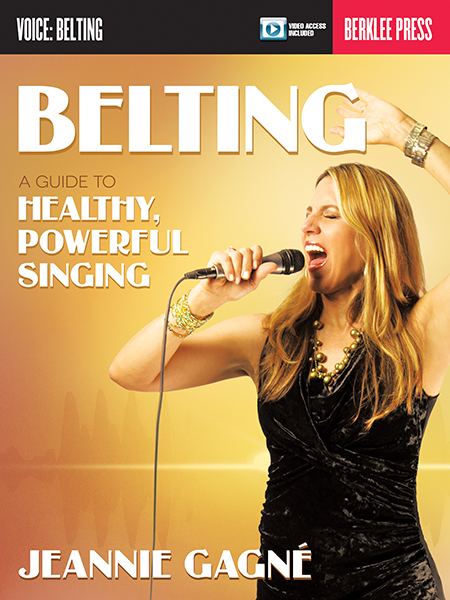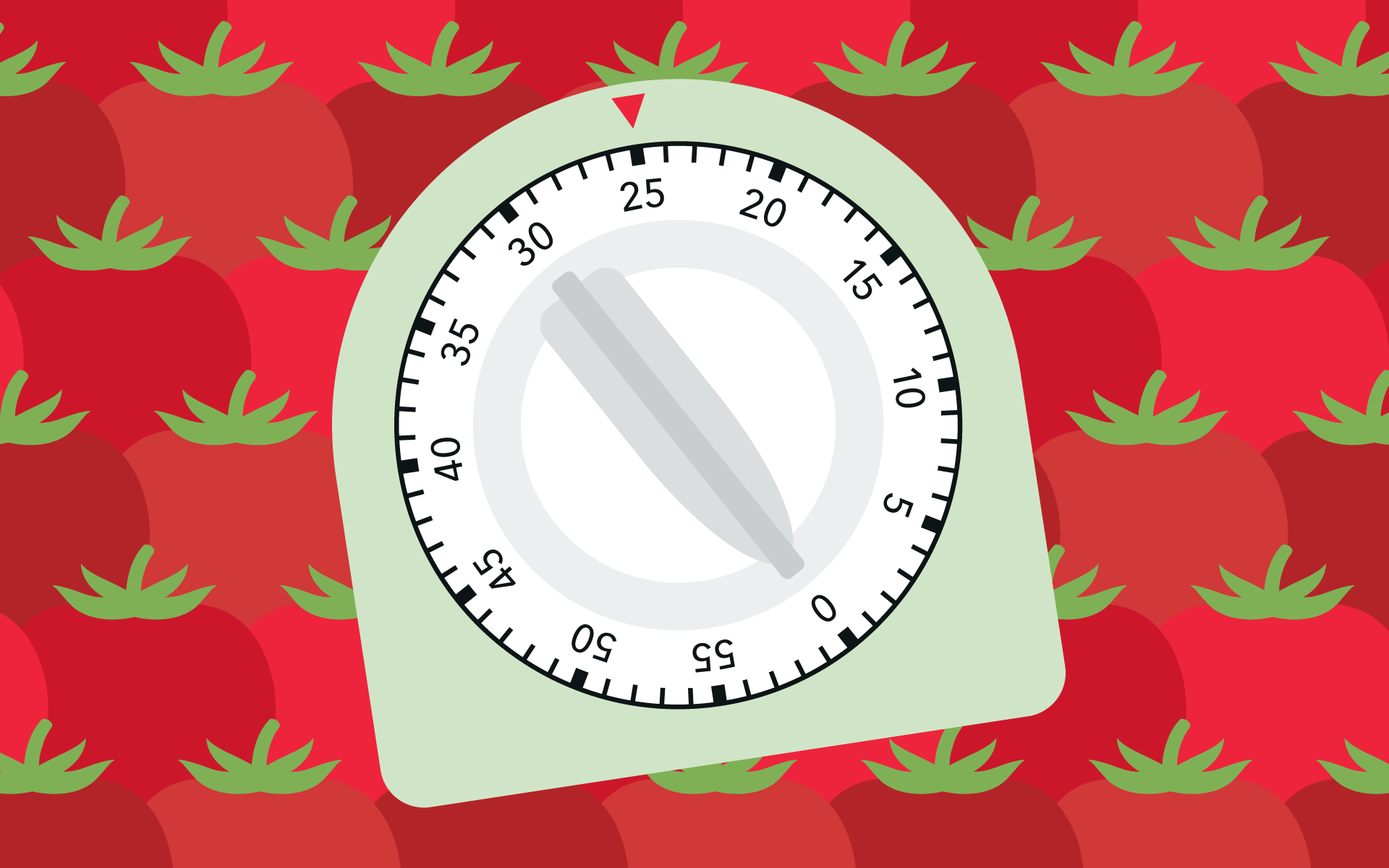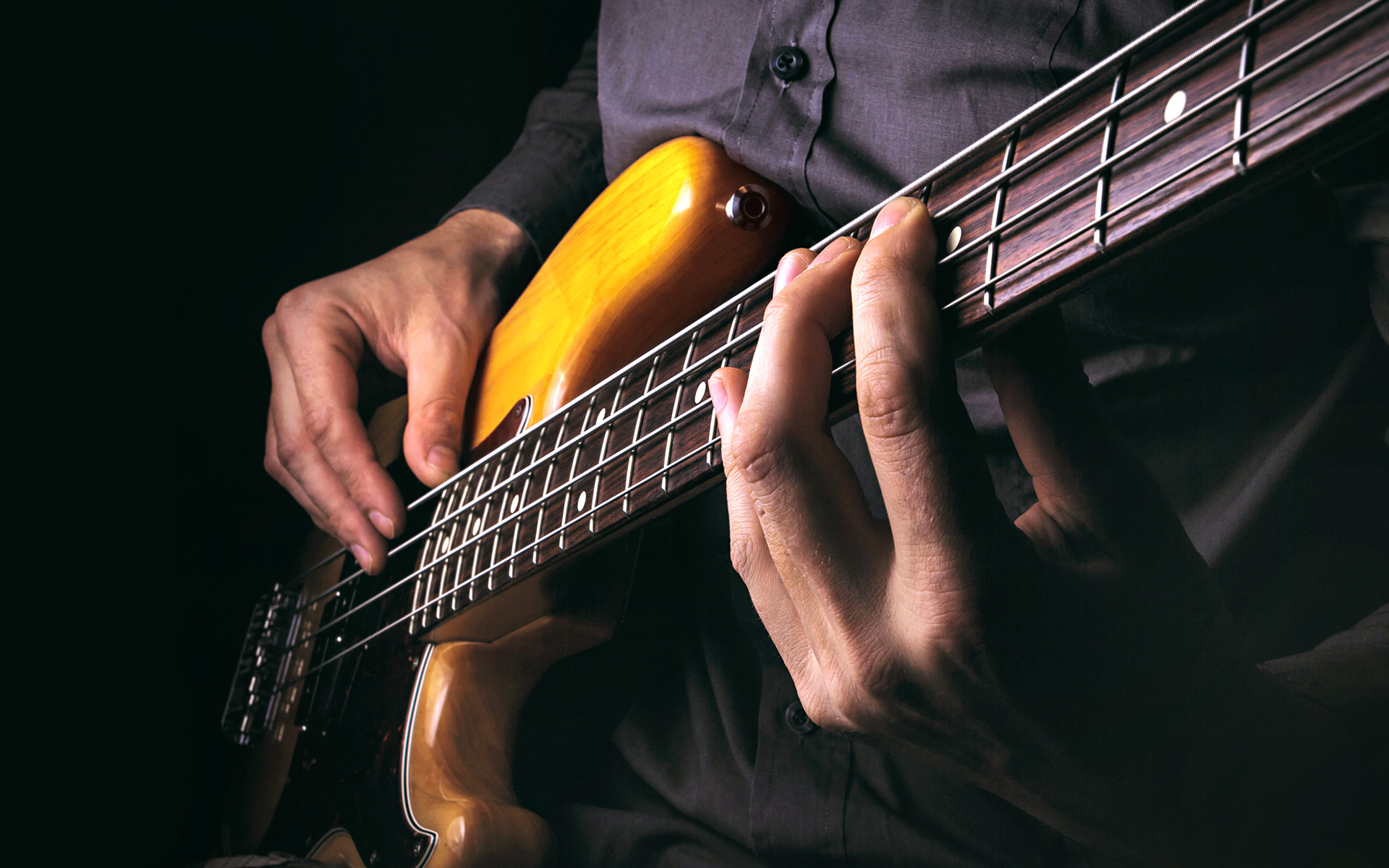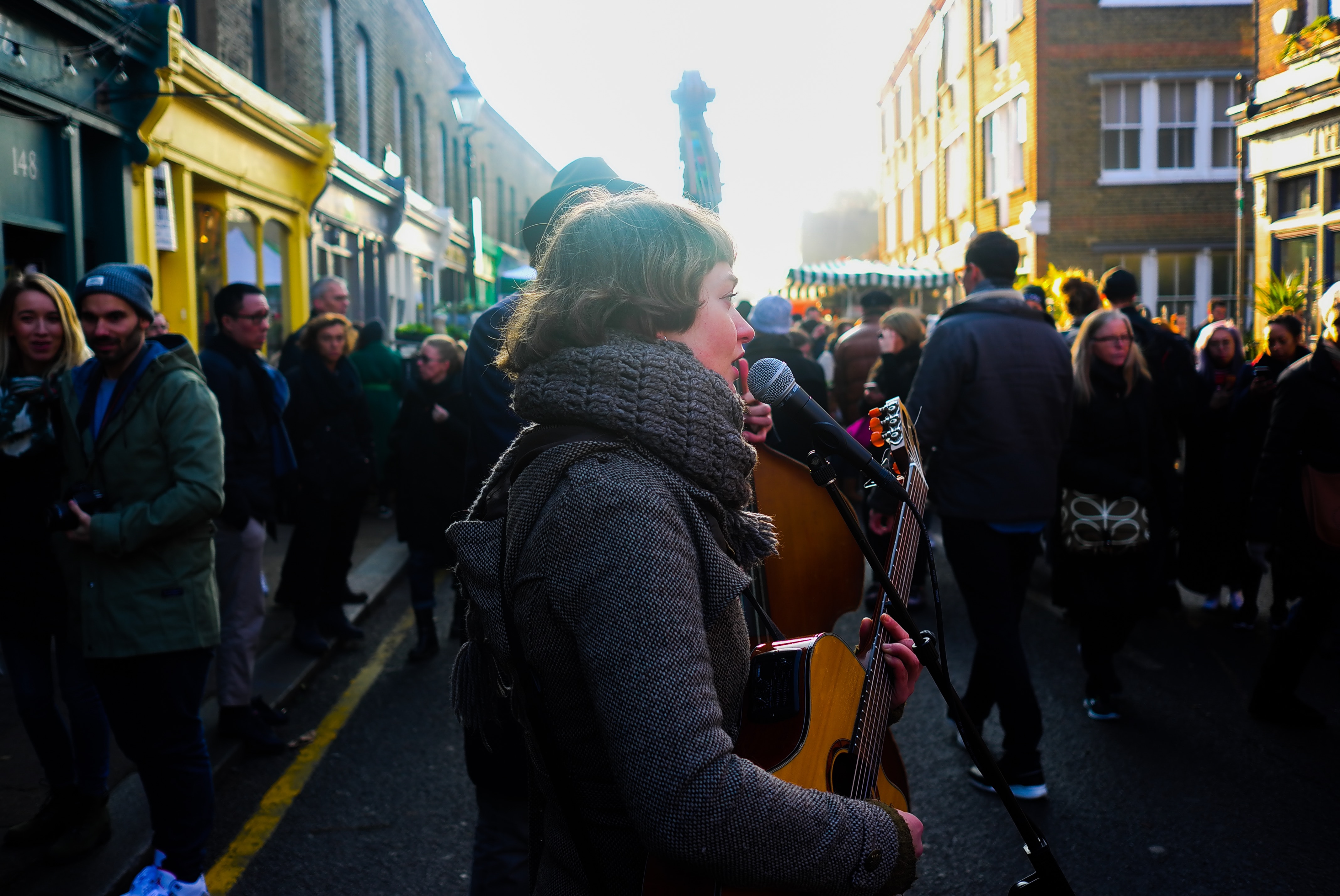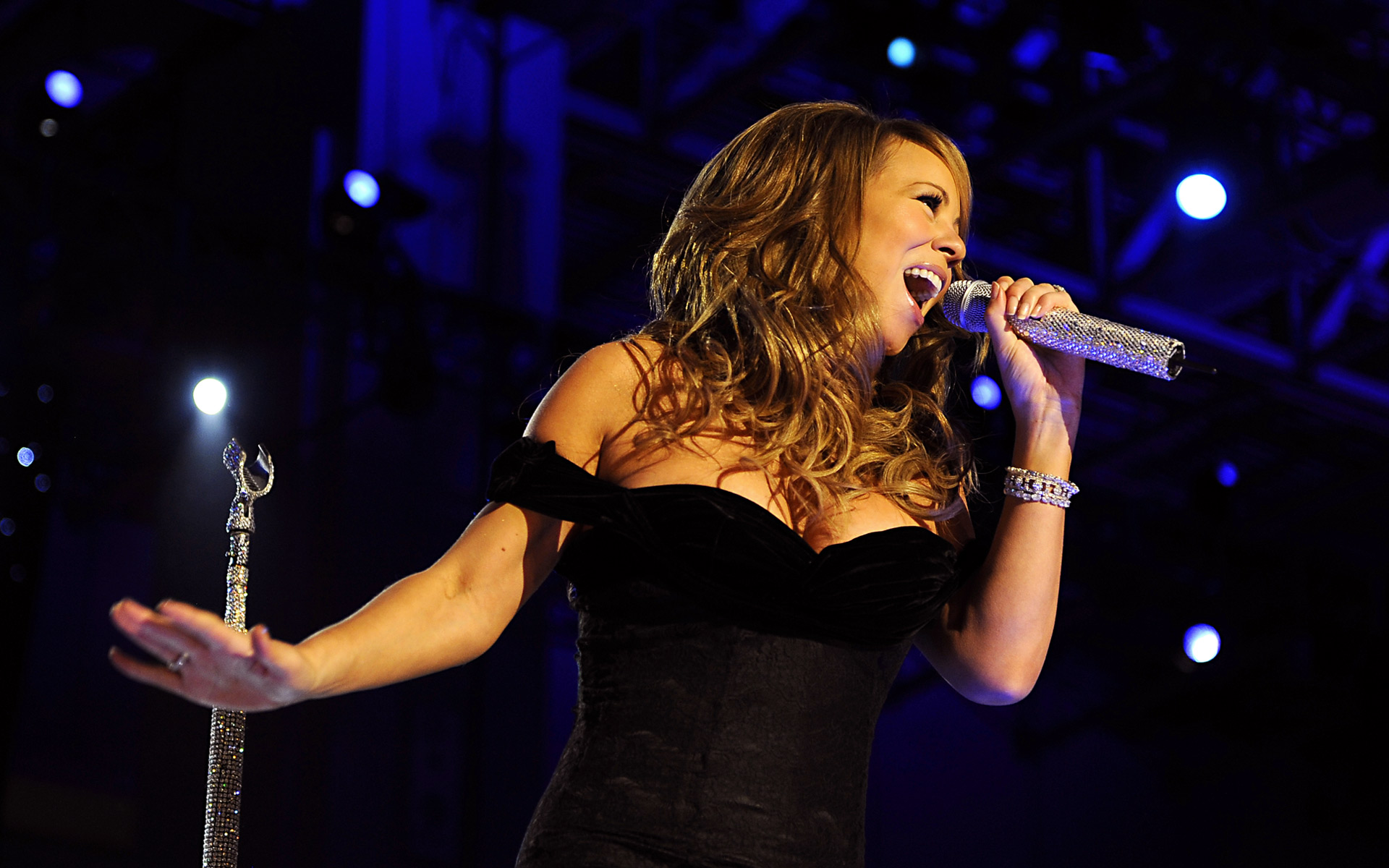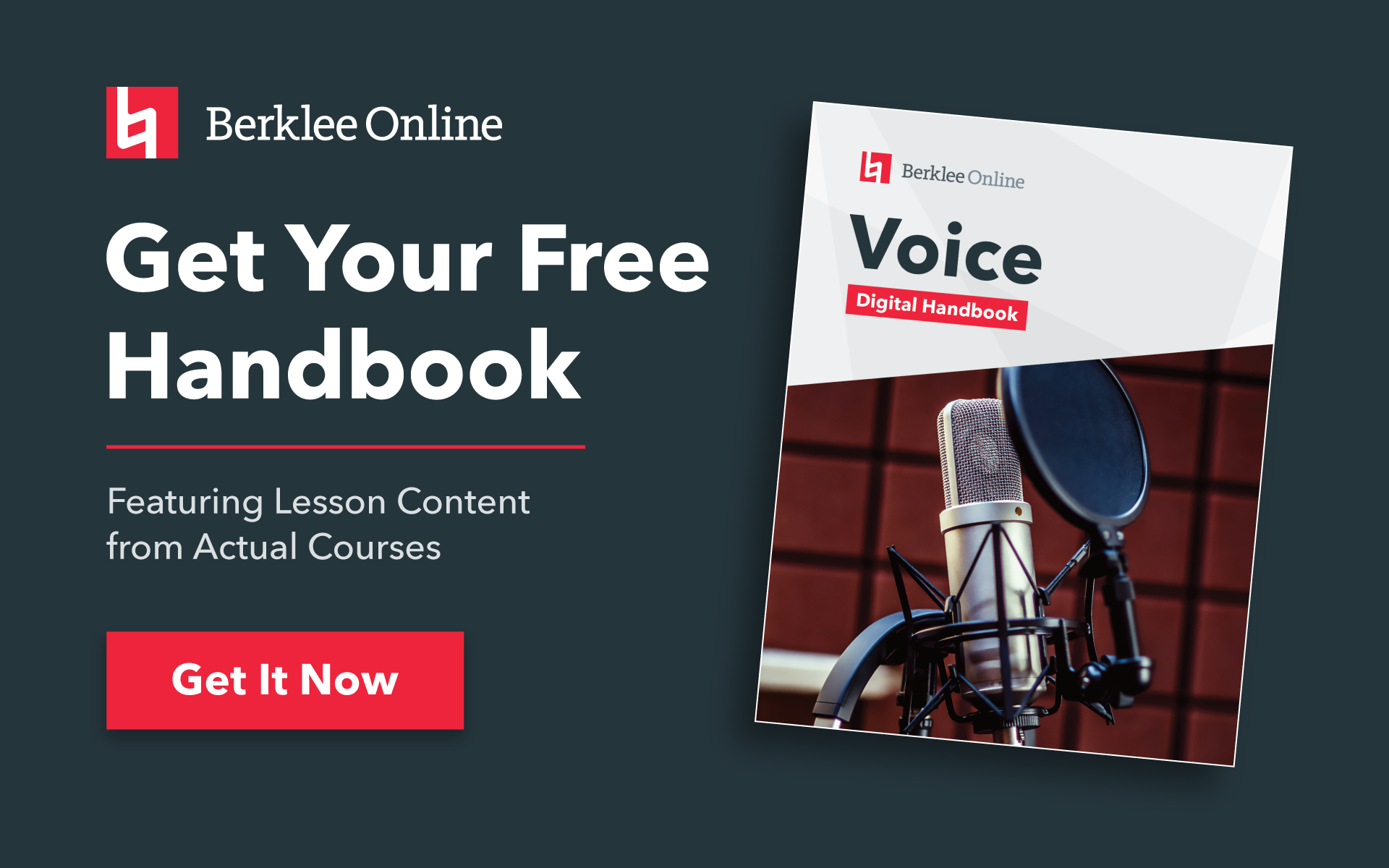Jeannie Gagné has trained thousands of vocalists to sing with healthy technique and deep expression. In her book Belting (Berklee Press, 2015), she takes on one of the more controversial singing techniques, which has been responsible for injuring many a singer. But through detailed discussions of anatomy, technique, and many targeted vocal exercises—all illustrated with videos, plus some helpful audio backing tracks—she reveals how this expressive style of singing can be done without causing pain or injury. Here’s my interview with Jeannie about Belting. She is also the author of Your Singing Voice (Berklee Press, 2012), which is an excellent, more general book about vocal technique, expression, and health.
Jonathan: Are there any famous singers who you want to shake by the lapels and train how to change their technique so that they don’t hurt themselves?
Jeannie: There are many!
- Christina Aguilera. She is extremely gifted, but sings with a very tight jaw and constricted throat. It’s amazing that she hasn’t hurt her voice. Some people are just born with “pipes of steel” that other singers could never imitate. I would work with her to release her jaw, though at this stage in the game—and because it works for her—changing this habit would be a lengthy process that she would have to embrace.
- Alicia Keys is another singer who strains. Her singing is full of passion and feeling, and she uses a raspy sound. These qualities are extremely popular. However, in her case, this is at a cost. Her voice has become more hoarse, and she is pushing even harder to get sound. I would welcome working with such a gifted singer to help her release the tension, lower her chin, breathe deeply. Her singing would become even more impressive.
- Bruce Springsteen has come a long way from scream-singing, but you can see from the veins bulging in his neck that he still pushes his singing with every ounce of his energy. He is a force to be reckoned with! From what I observe, I would guess he has had some coaching and has shifted his singing approach to be easier on his body. He may also have pipes of steel.
Take Jeannie Gagné’s course: Popular Singing Styles: Developing Your Sound
How does belting differ from regular singing? From shouting?
Simply stated, belting is loud, high singing. What is regular singing? There is not one setting, one dynamic for “regular.” The voice moves and pivots all day long through different registers and positions, whether singing or speaking. Nor is there but one way to produce a belt sound, which is a common false belief.
Shouting is very forced and can hurt the voice. Many singers belt in a shout fashion. High belted notes can in fact be relatively easy to do using a bright “twang” sound, though a good deal of athletic energy is always required.
What mistakes do you commonly see vocalists make when trying to belt?
Pushing up “chest voice” way too far, constricting the throat, straining the voice, singing in the wrong key, pushing for too much volume, taking in huge gasps of air, visualizing the top notes as high that must be reached for. They’re not high! They are faster, shorter frequencies, and the voice is more taut.
Can everyone belt? If not, how do you know if your voice would be well suited to belting?
Everyone can make a belted sound, though the volume and quality will differ widely depending on a person’s vocal anatomy, experience, and even personality. Those who are naturally loud speakers take to belting more easily than those who are soft spoken. Smaller voices, and higher pitched women’s voices, may have more of a challenge learning how to belt. Not everyone’s musical style should embrace belting. It is definitely not for everyone.
How do you know if you are causing injury to your voice?
If after you have sung your voice is very tired, or hoarse, or your throat is sore, you have been potentially hurting your voice. If speaking is at all impaired after you sing, that is straining that could lead to injury. Another measurement is how long you can sing without issue. 20 minutes? 1 hour? 3 hours? It should be at least 1-2 hours.
What would you say is the most important and productive vocal exercise?
Soft, clean tones. I have illustrated these in both of my books. It may seem contradictory, but warming up and vocalizing on a sustained, clean and soft sound—not a breathy one—is the best way to prepare for belting. This method brings the vocal folds together in a healthy vibration pattern without abrasion, which provides the perfect environment for a stronger use of the voice.
When you are developing an interpretation of a song, how do you see the role of belting? Is it commonly used throughout, or only for specific lines? Is there a way that you determine what parts of a song are well suited to being belted?
Compare singing to speaking. When we converse, our voices go from loud to soft, from fast to slow, even within a single sentence. Singing is expressing words on a melody, really an artistic form of speech. The melody will tell you when to stress an emotional point, or to lay back. Think about the lyrics! Belting should NOT be used throughout an entire song, except occasionally for a very dramatic song (such as “New York, New York,” and even then there are softer passages). Again, since belting is high and loud singing, if the melody passage is low, you aren’t belting.
Belting is also very dramatic. Sometimes you don’t want so much drama! Don’t over spice your dish. Finally, sometimes the volume of the band you’re working with, combined with the sound in the venue, can encourage a singer to push the voice too hard to be heard. We sound VERY different alone in a room than in a hall through a PA system. It is important to get used to the sound of your voice through a microphone, so it doesn’t throw you off, or cause you to strain your voice.
What advice do you give to singers, belters or others, that often leads them to find exponential improvement?
Practice. Listen. WARM UP before you get into heavier singing, at least for a half hour! Use your entire body. Be aware of your feet, ground your instrument through your legs. Use breath. Singing is athletic, especially belting.
Exercise: run, swim, go to the gym, ride a bike, lift weights, whatever. This teaches your lungs to exercise, too!
There was some controversy about whether or not we should publish this book, regarding some vocal teachers feeling that anyone who wants to belt really must study with a private instructor so as not to injure themselves. How did you finally win them over?
That’s a great question! There is always controversy around belting, with many teachers refusing to deal with it in the lesson, and others insist it is harmful to the voice and ugly-sounding to boot. Then, other teachers press students into belting to get a contemporary, powerful sound, but focus more on style and coaching rather than on technique.
In the case of writing the book, I was adamant that it contained medical fact, and that I consulted on the vocal anatomy with an expert at Tufts Medical Center in Boston. You can’t argue with the facts. I was very careful to explain in the book exactly what happens when we sing, whether it’s belting or not. It is important to dispel the many false myths that are floating around.
Finally, I insisted with the publisher that the book come with video examples, as well as audio tracks to practice with. In this way, the four young singers and I in the videos demonstrate a great deal, even though we’re not in the room with the aspiring belter. It’s always ideal to work with a teacher who understands the truths about belting—and all kinds of singing, for that matter—but when that’s not possible, turn to a well-researched, reliable, and seasoned expert who knows what she’s talking about.
Could you point us to a really great, classic recording or two on YouTube of someone belting? Tell us what is so great about it.
Jesse J is a great belter. She is confident, relaxed, yet very animated and gets that sweet spot of twang in her oropharynx (back of the throat) that is just right to produce a loud sound. She does work hard—but she is not straining much at all. “Price Tag” is a song that is strong vocally, but most of it is not in a belted voice. This is part of her success: she belts, and doesn’t belt, too.
Another great singer was Judy Garland. She was a phenomenal performer, and belted a lot, more in what we would call today a “musical theater” style. In “Get Happy” again, her singing is strong, but most of her belting is saved for the end of the song.
How about a video of someone famous who is known to have suffered a vocal injury, and a video showing what they were doing wrong?)
John Mayer had a vocal injury that required surgery, as we know. Ironically, he was not belting; he was singing with an overly-constricted throat, even on softer passages. That gave him that “sexy” sound that is so popular. Again, it was at a cost. His singing face was either too tight, or too agape, even uncomfortable to watch at times. He was working too hard. Here’s a full concert that shows him singing many songs in 2008.
Again, he’s singing with so much feeling, most people wouldn’t notice the technique getting in his way. He has taken some vocal therapy since then and is singing much more healthfully now.
STUDY VOICE WITH BERKLEE ONLINE





